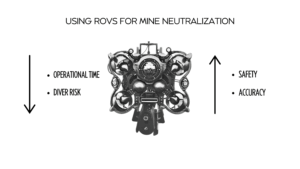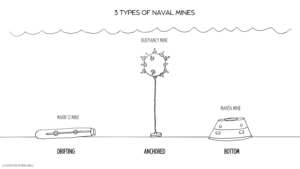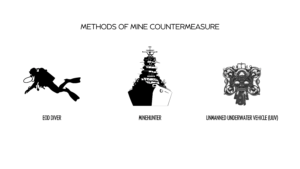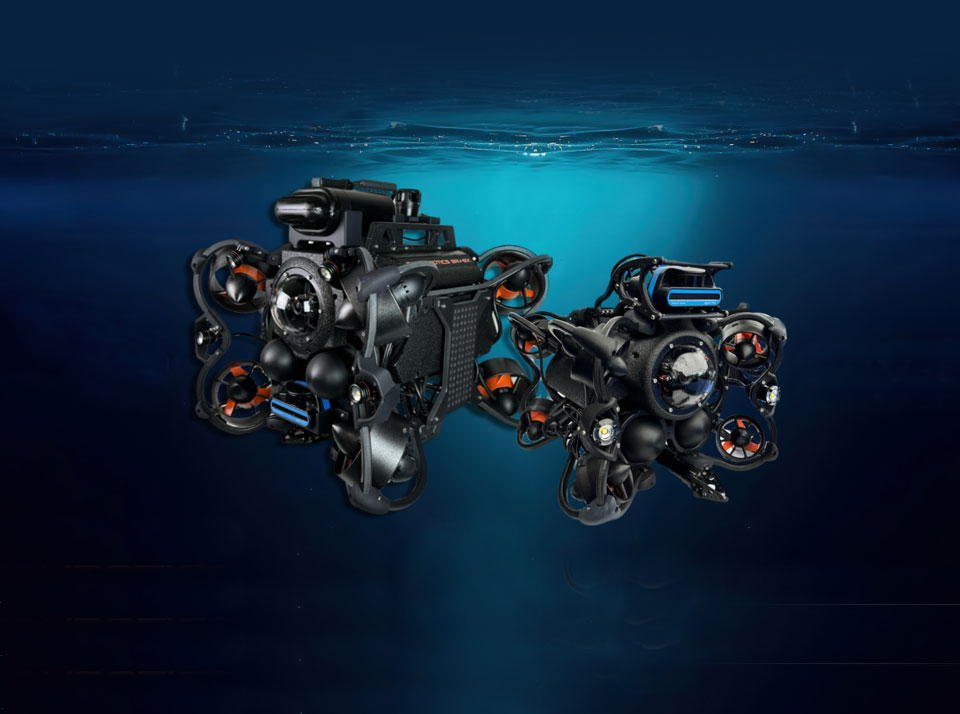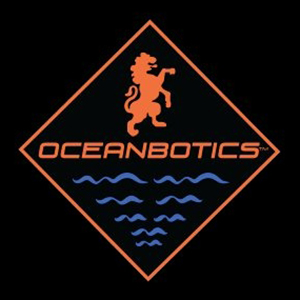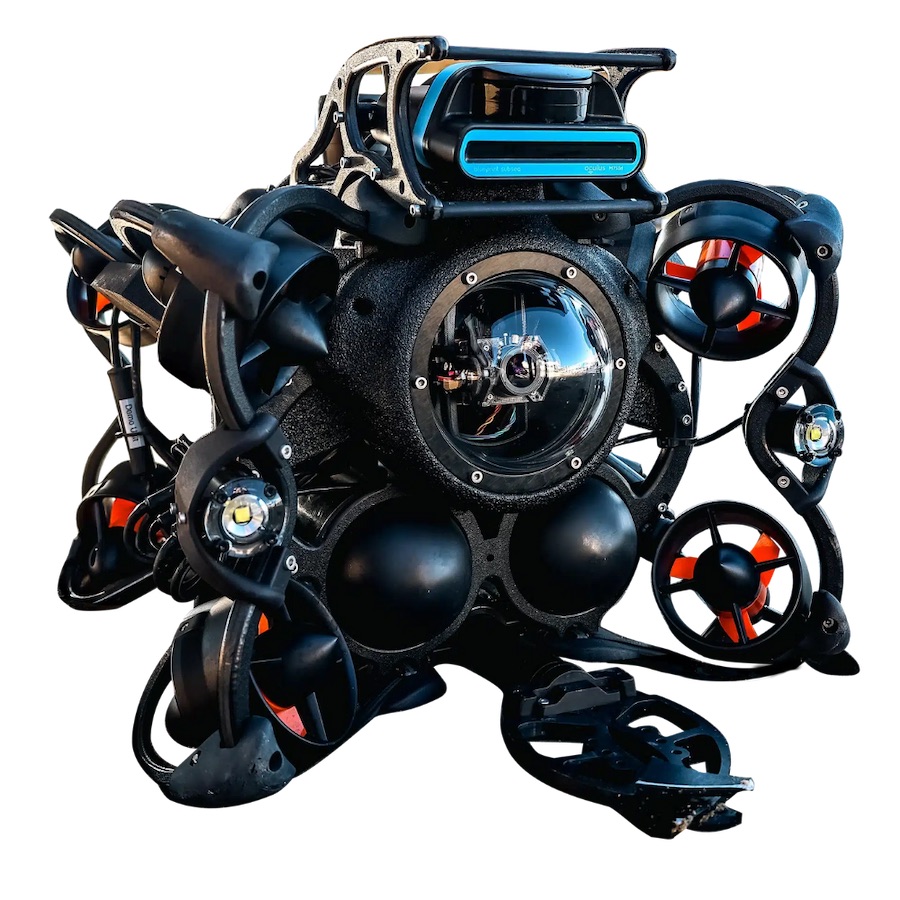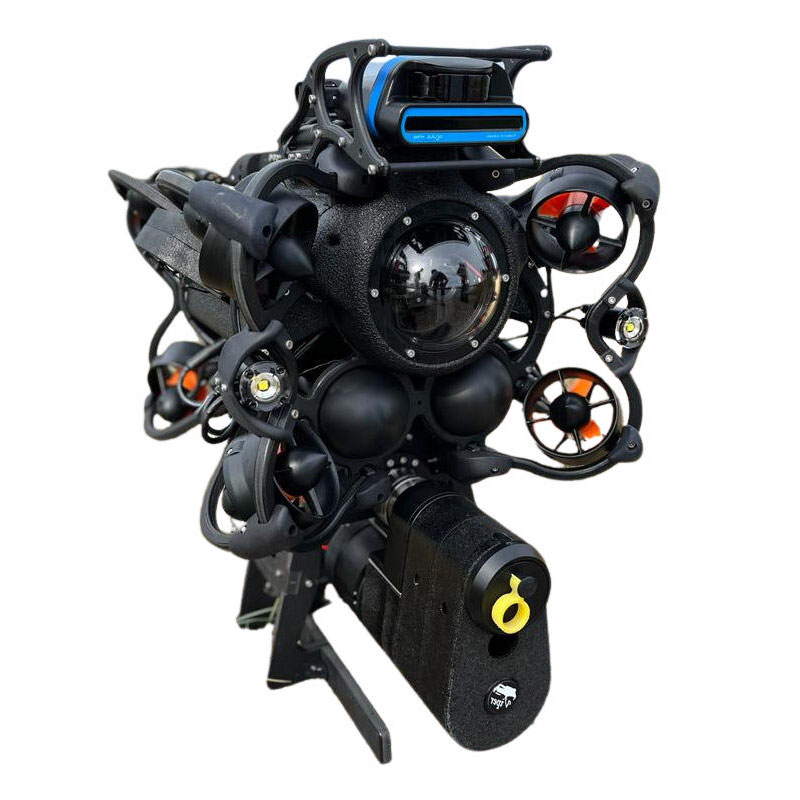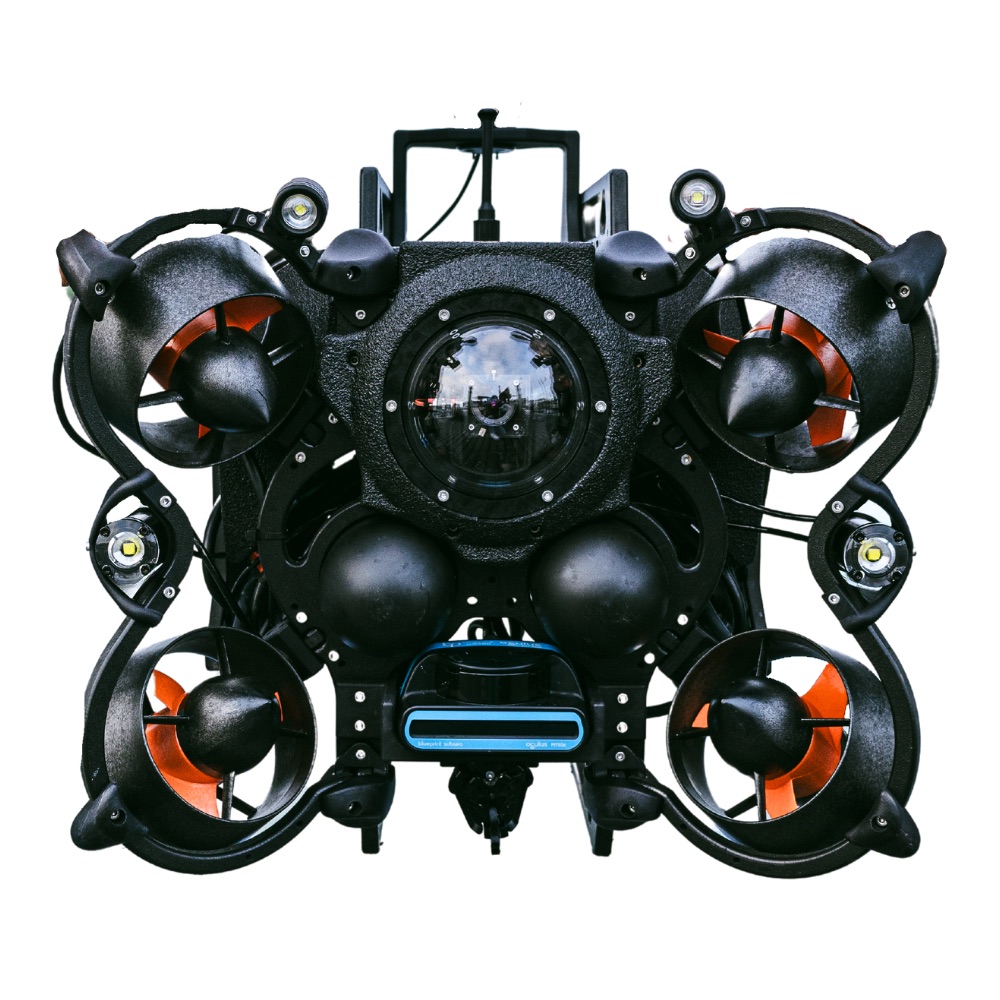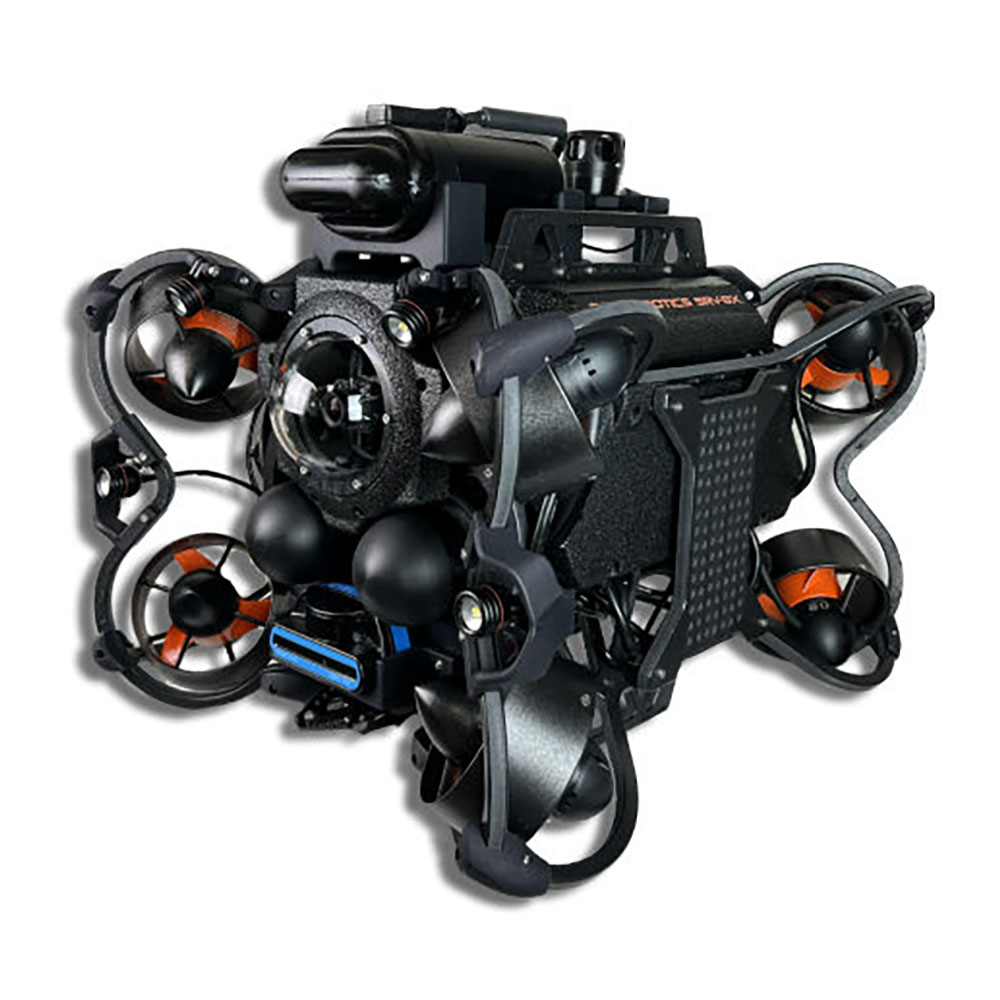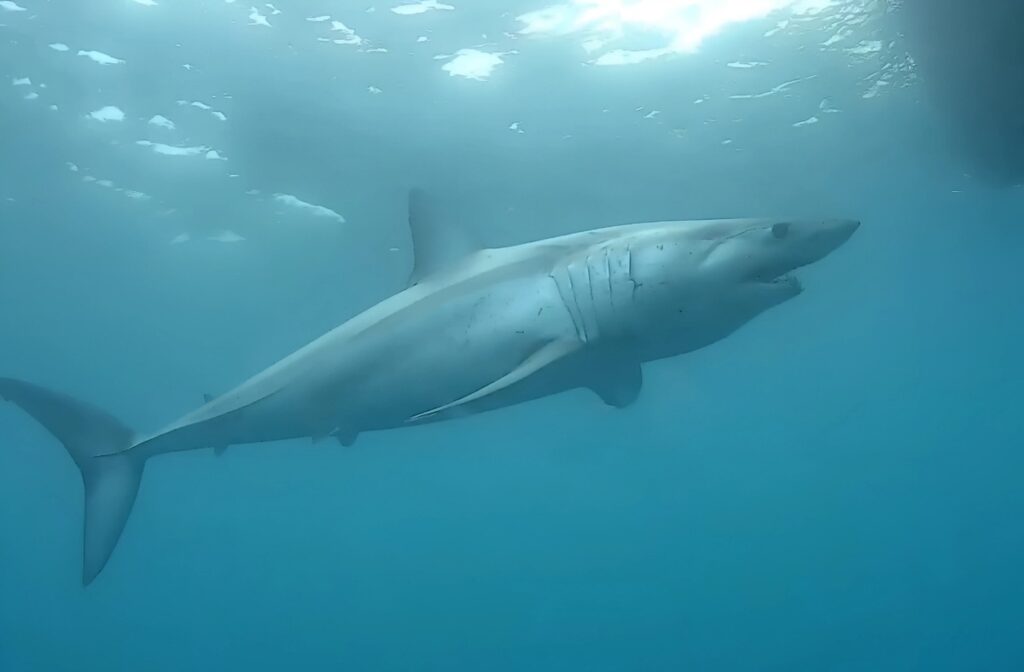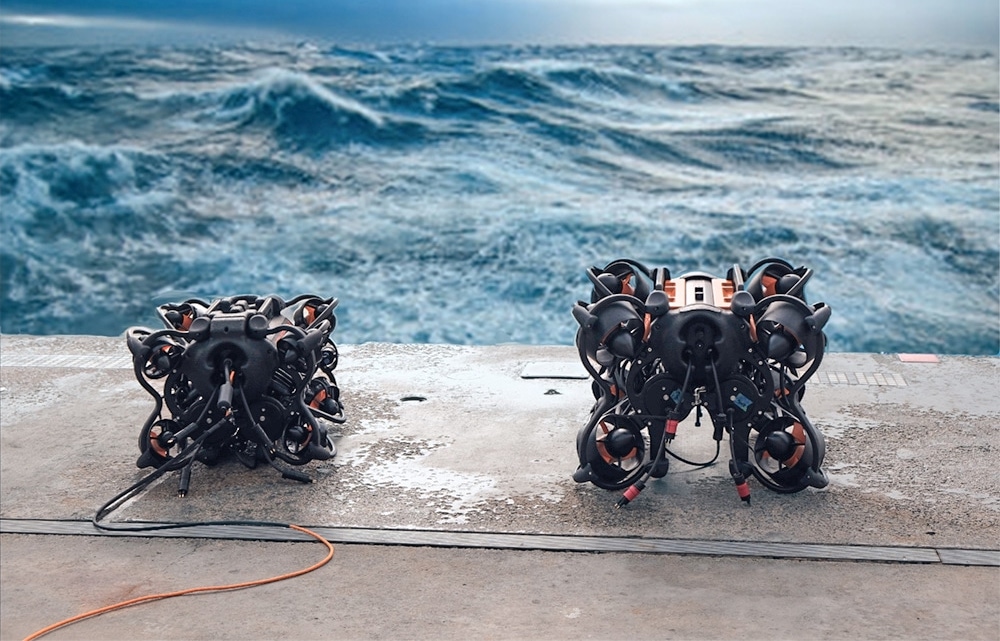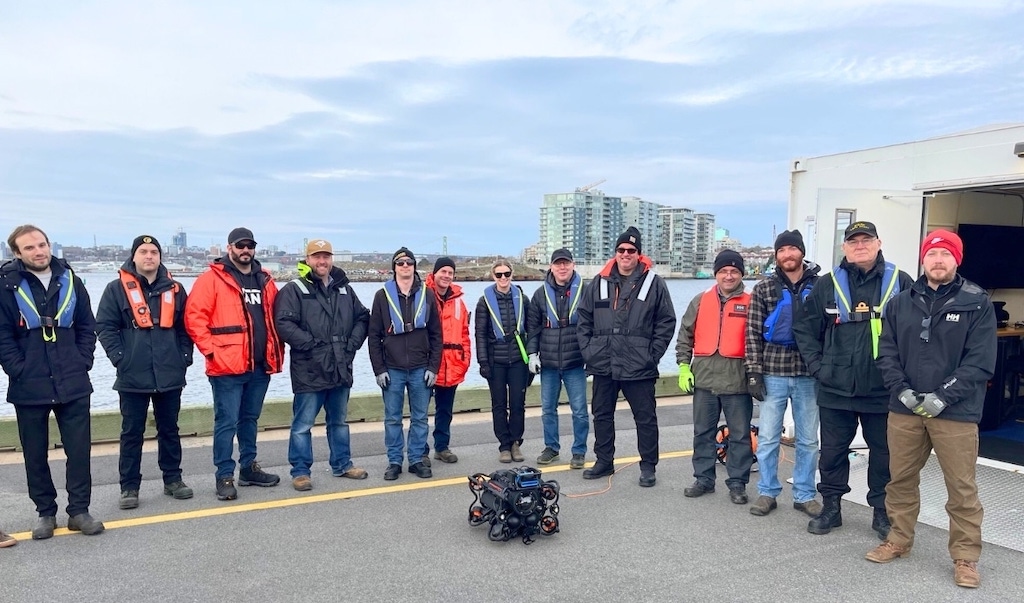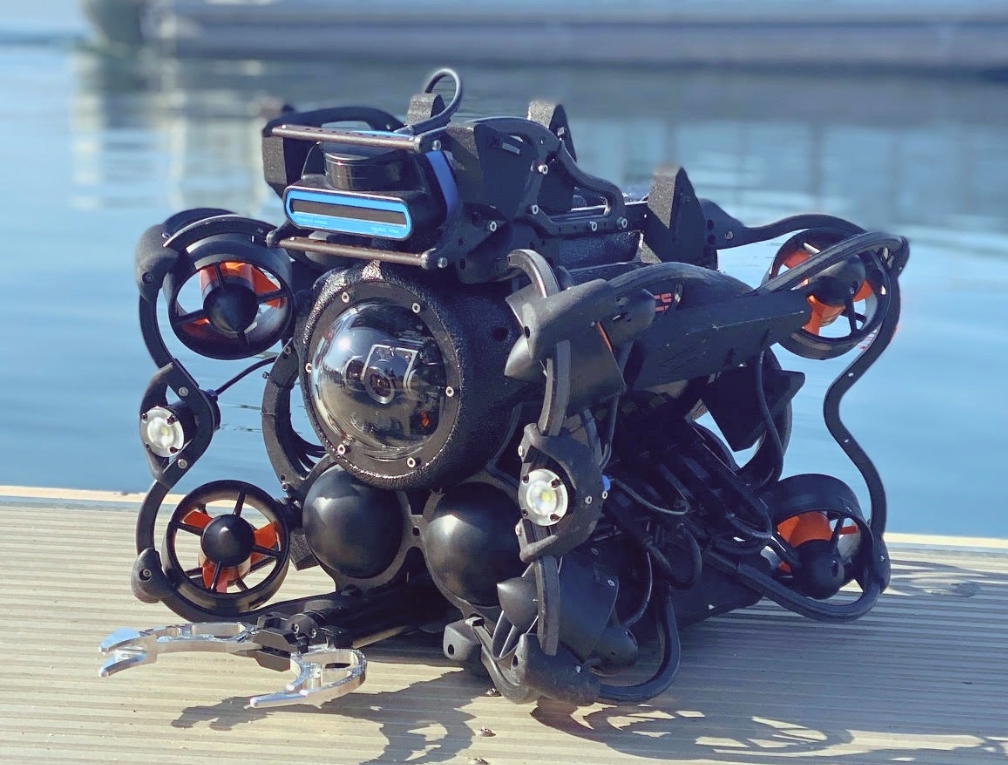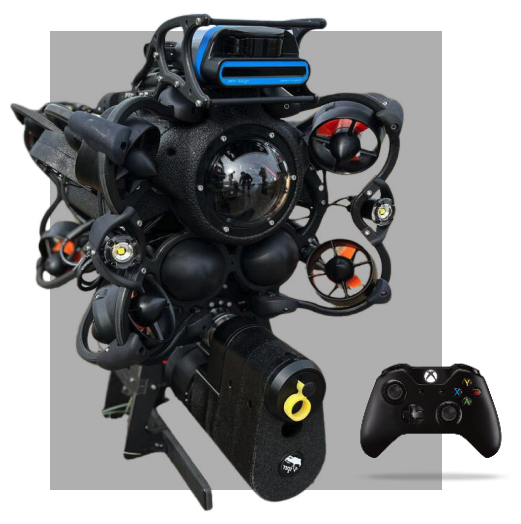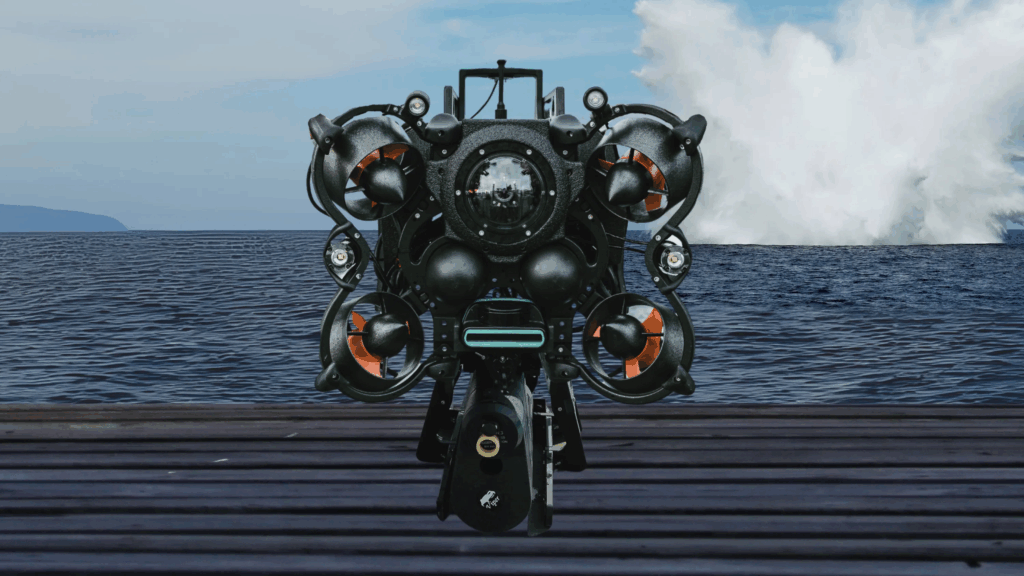
In close collaboration with Explosive Ordnance Disposal (EOD) experts, Oceanbotics has developed the SRV-8X, a purpose-built Remotely Operated Vehicle (ROV) engineered to reduce the level of risk to both human and marine life during mine disposal missions.
From disarming naval mines to neutralizing underwater IEDs, EOD missions demand precision, courage, and effective tools. As the seabed remains littered with unexploded ordnance (UXO) from past and current conflicts, these threats pose serious risks to maritime operations, commercial ventures, and marine ecosystems.
Thanks to advancements in subsea robotics, EOD teams now have safer, faster, and more effective tools at their disposal—most notably, ROVs. This article dives into the evolving role of EOD professionals, the dangers of underwater mines, and how commercial-grade ROVs like the SRV-8X are used in mine countermeasures (MCM).
Neutralizing Mines with the SRV-8X
The SRV-8X eliminates the need to place divers near volatile threats by carrying out remote neutralization operations with accuracy and control. Here’s how a typical mine disposal mission works:
- Detect and Approach: The ROV uses sonar and cameras to locate the mine.
- Position the Tool: A charge disruptor is carefully placed at the mine’s weak point.
- Release and Retreat: The ROV backs away after releasing a shock tube or other neutralization device.
- Detonate Safely: Once at a safe distance, the operator remotely triggers the explosion to destroy the mine.
This method ensures operator safety while delivering the precision needed for effective UXO disposal.
Key Benefits for EOD Teams:
- Rapid Deployment – Fully operational in under three minutes for immediate response.
- Diver Safety – Removes personnel from high-risk zones, reducing exposure to explosives.
- Exceptional Precision – Advanced controls and high-definition sonar/camera systems enable pinpoint placement of neutralization tools.
- Mission Versatility – Easily adapts to a range of UXO types and disposal techniques.
- Real-Time Feedback – Sunlight-readable monitors provide clear visual and sonar data in challenging underwater environments.
Understanding the Threat: Naval Mines & UXOs
Naval mines are underwater explosives engineered to damage or destroy vessels. Used historically to block access or funnel enemy forces, many of these devices remain hidden along ocean floors, creating hazards for both people and marine life. Three common types of naval mines include:
- Drifting Mines: Free-floating explosives carried by ocean currents, such as the Mark 12.
- Moored Mines: Suspended in the water column and anchored to the seabed.
- Bottom Mines: Stationary devices like the Manta mine that rest on the ocean floor, often hidden by silt or vegetation. Despite their age, many of these devices remain fully active, capable of detonating on contact or leaking toxic chemicals into the marine environment.
Who’s at Risk?
UXOs present a constant danger to a wide range of individuals:
- Maritime Operators: Ship captains, submarine crews, and commercial vessel operators rely on detection systems to avoid minefields.
- Divers and Researchers: Individuals working near or on the seafloor are at serious risk of triggering undetected ordnance.
- Marine Ecosystems: Sea life may unknowingly activate mines, leading to devastating ecological consequences.
Left unchecked, these hazards can render vast areas of the ocean unsafe for navigation, habitation, or research for decades.
What Are Mine Countermeasures?
Mine countermeasures , or subsea mine neutralization, encompass all techniques used to detect, classify, and neutralize sea-based explosives. These efforts typically involve a combination of:
- EOD Divers: Elite professionals trained to identify and disarm underwater mines manually.
- Minehunter Vessels: Ships outfitted with sonar, magnetic sensors, and mechanical cutters to locate and disable mines.
- Unmanned Underwater Vehicles (UUVs): Robotic systems that detect and neutralize mines in high-risk environments.
While human divers remain essential for certain missions, the increasing use of robotic technologies is reshaping how MCM teams operate.
Reducing Risk with ROVs in EOD Operations
The integration of ROVs has become a strategic enhancement for mine disposal teams. When facing volatile underwater threats, sending divers is often too dangerous. ROVs offer a safe alternative—keeping personnel out of harm’s way while increasing precision and speed.
Equipped with sonar, high-definition cameras, and manipulator tools, modern ROVs can rapidly locate underwater mines, navigate to precise positions for neutralization, and deploy detonation tools and retreat safely before activation.
These capabilities reduce mission duration, human exposure, and error rates—all while improving overall operational efficiency.
The Future of Mine Countermeasures
Explosive Ordnance Disposal specialists face high-stakes missions involving underwater mines, improvised explosive devices, and other forms of unexploded ordnance. These threats, many of which have been lingering on the seafloor for decades, endanger commercial shipping, naval operations, and marine ecosystems alike.
The role of commercial ROVs in EOD operations across the globe is only growing. By replacing risky manual operations with robust, user-friendly subsea robotics such as the SRV-8X, EOD teams gain safer and more effective tools to complete their missions with confidence.





